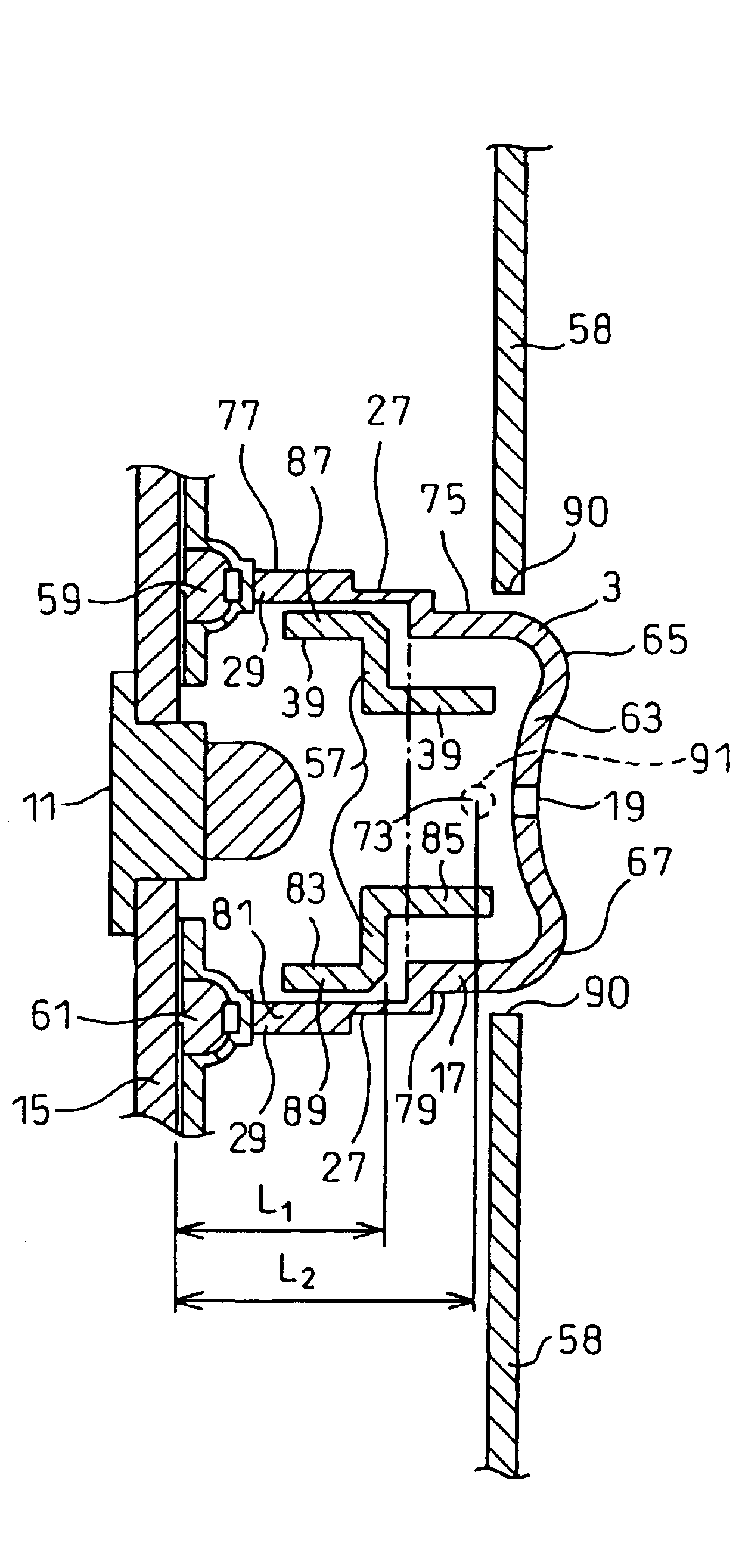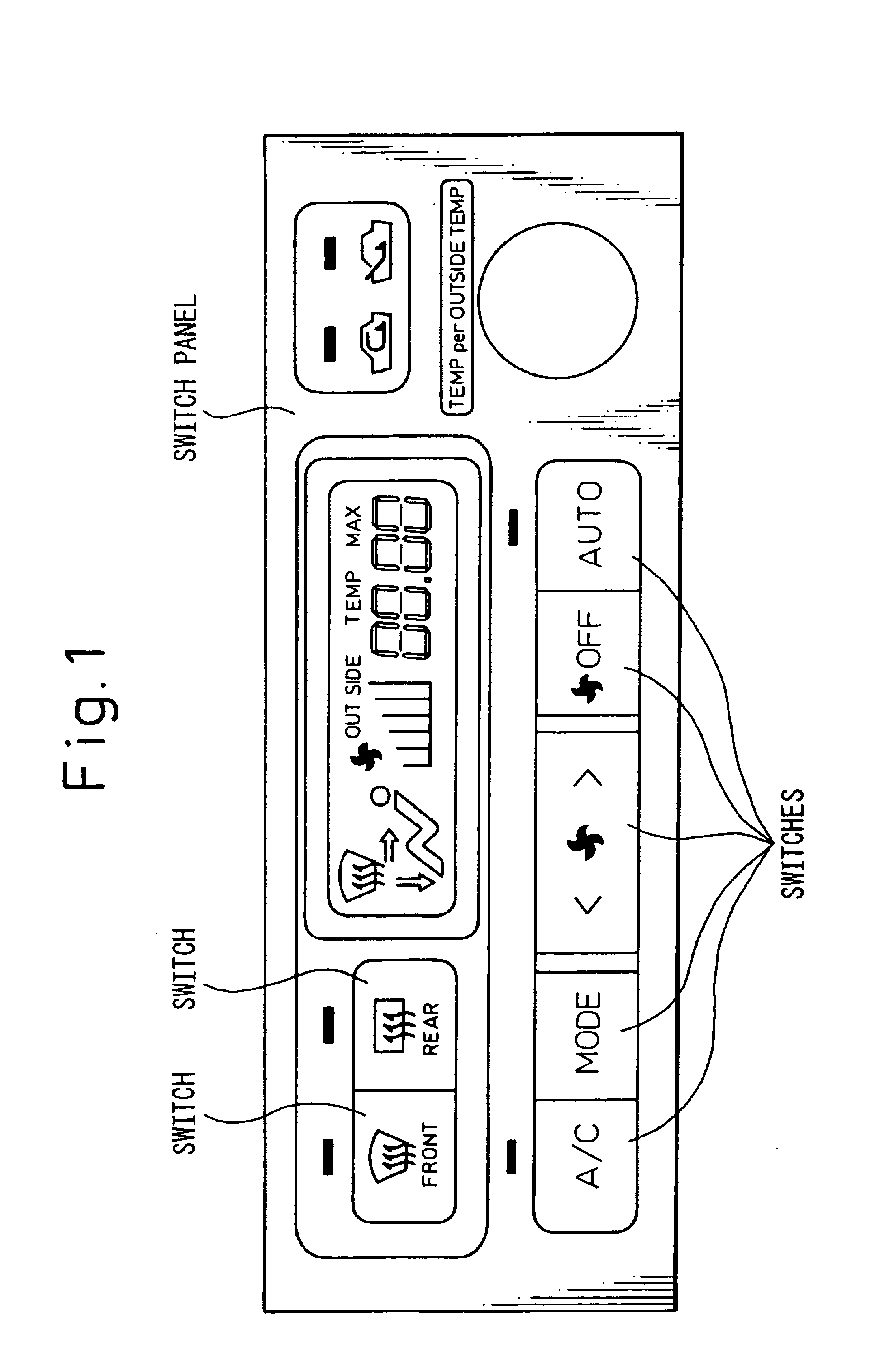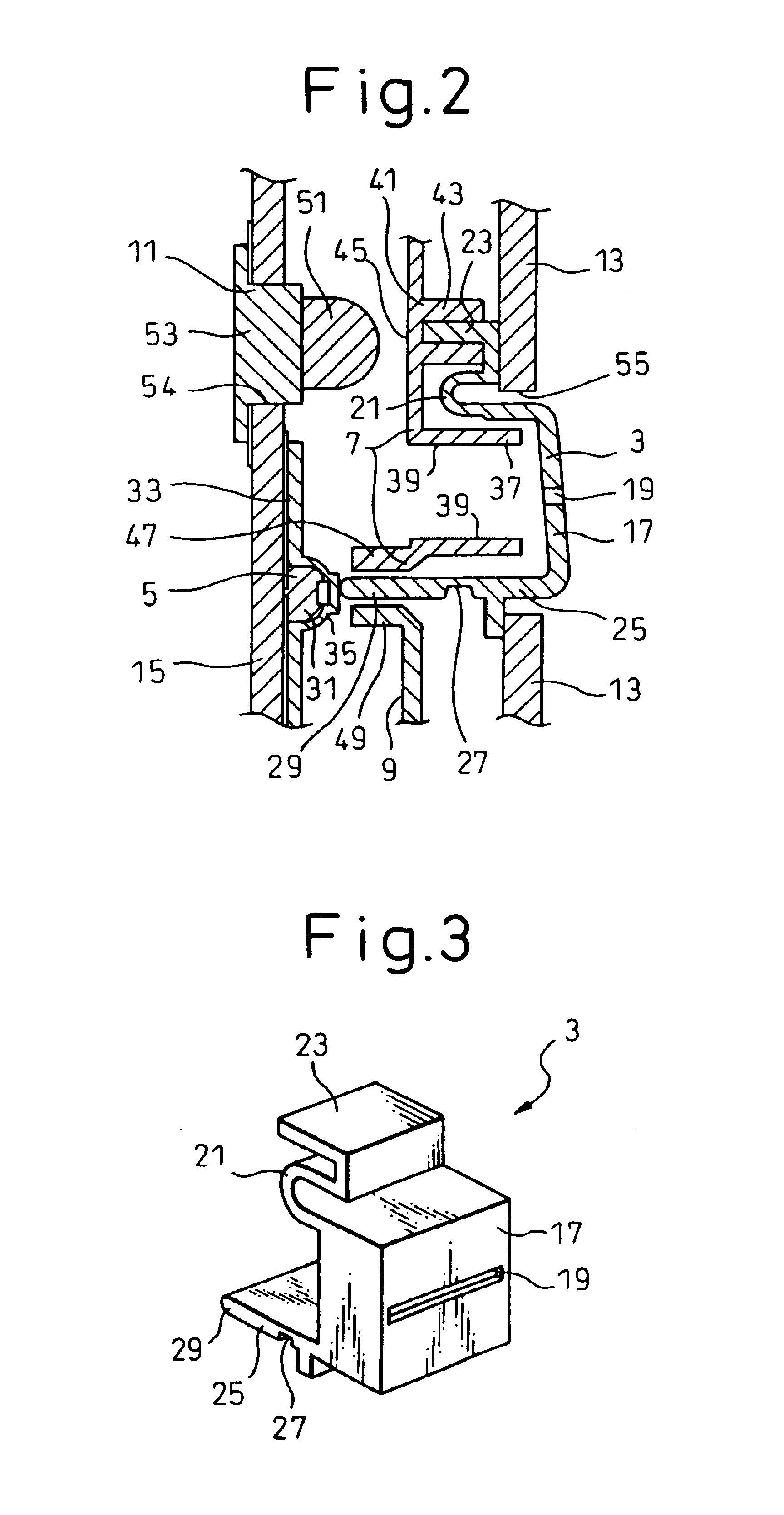Switch structure
a technology of switch structure and switch body, which is applied in the direction of emergency actuators, contact mechanisms, tumbler/rocker switch details, etc., can solve the problems of affecting operation, affecting and reducing the operation of the switch
- Summary
- Abstract
- Description
- Claims
- Application Information
AI Technical Summary
Benefits of technology
Problems solved by technology
Method used
Image
Examples
first embodiment
Next, the embodiments of the switch structure according to the present invention are described below. First, the switch structure in the first embodiment is described by reference to FIG. 1 to FIG. 4. Here, FIG. 1 is an external view of a switch panel of an air conditioner for a vehicle, FIG. 2 is a sectional side elevation of a switch structure, and FIG. 3 and FIG. 4 are perspective views of the parts making up the switch structure.
The switch structure in the first embodiment is used as a switch panel of an air conditioner for a vehicle shown in FIG. 1. The switch panel comprises a plurality of switches (such as a fan switch) for directing various operations of the air conditioner, and the switch structure in the first embodiment is used in these switches.
As shown in FIG. 2, the switch structure in the first embodiment comprises a push button section 3 that pivots when pushed, a switch element 5 that is mechanically turned on and off by the push button section 3, a supporting membe...
second embodiment
The switch structure in the second embodiment comprises the push button section 3 that pivots when pushed, an internal guide section 57 that guides the movement of the push button section 3, a case 58 that is the body of the switch structure, an upper side switch element 59 (switch element A) and a lower side switch element 61 (switch element B), that is, a pair of switches to be turned on and off by the push button section 3, the light source section 11 that illuminates the push button section 3, and the substrate 15 that supports the upper side switch element 59, the lower side switch element 61 and the light source section 11.
The push button section 3 has the box-shaped push portion 17. A surface portion 63, which is the front side surface (right-hand side in FIG. 6) of the push portion 17, is formed so that its central area is slightly hollowed and comprises an upper side convex portion 65, which is a convex portion located at the upper side of the surface portion 63, and a lowe...
third embodiment
According to the switch structure in the third embodiment, however, the push button section 3 comprises a pivot shaft 93 above the push portion 17. The supporting member 7 comprises a shaft bearing portion 97 that supports the pivot shaft 93 while allowing a pivot movement. Therefore, when the push portion 17 is pushed, the push button section 3 can pivot about the pivot shaft 93 as a center.
The switch structure in the third embodiment has the same effects as the switch structure in the first embodiment.
PUM
 Login to View More
Login to View More Abstract
Description
Claims
Application Information
 Login to View More
Login to View More - R&D
- Intellectual Property
- Life Sciences
- Materials
- Tech Scout
- Unparalleled Data Quality
- Higher Quality Content
- 60% Fewer Hallucinations
Browse by: Latest US Patents, China's latest patents, Technical Efficacy Thesaurus, Application Domain, Technology Topic, Popular Technical Reports.
© 2025 PatSnap. All rights reserved.Legal|Privacy policy|Modern Slavery Act Transparency Statement|Sitemap|About US| Contact US: help@patsnap.com



